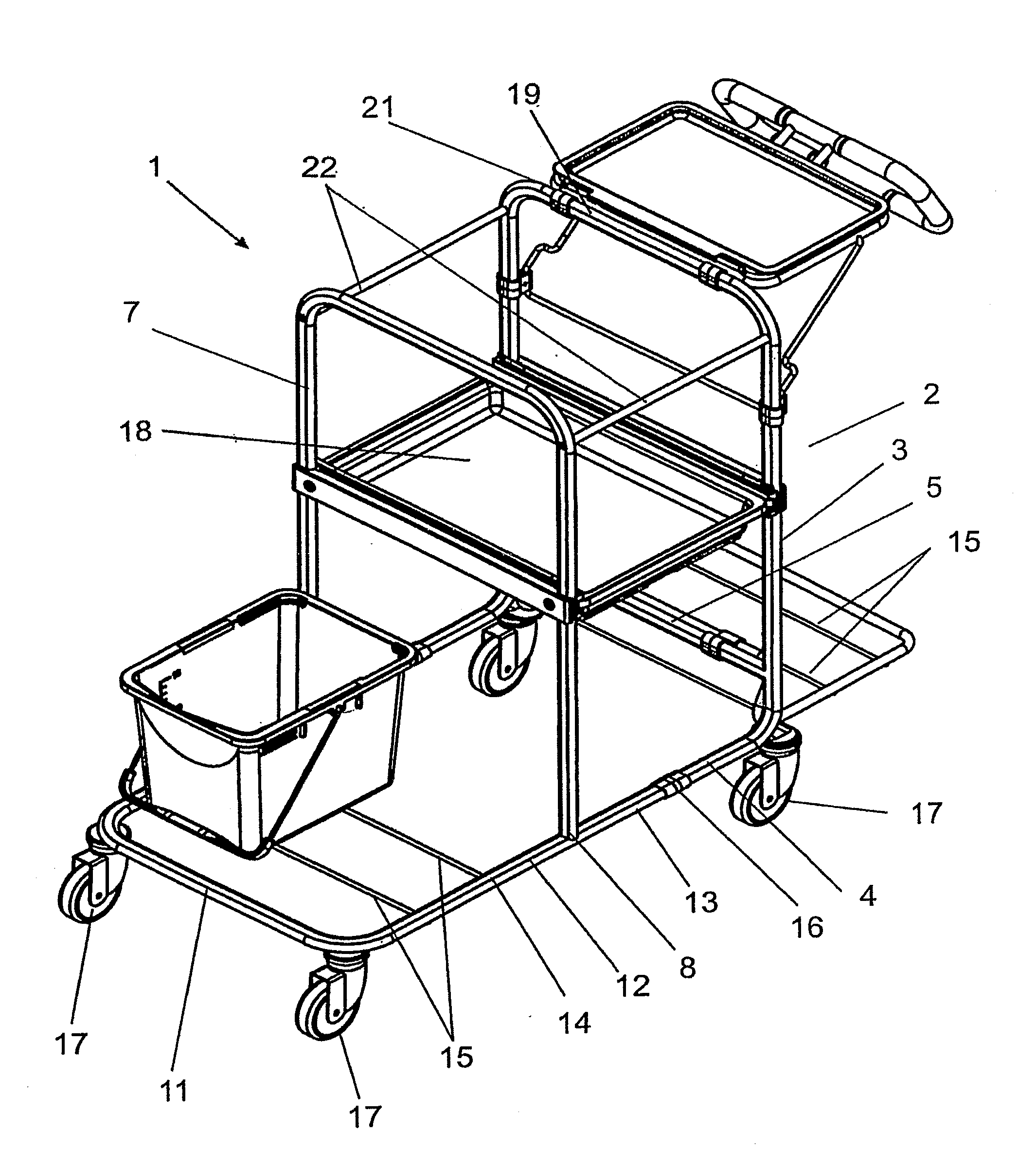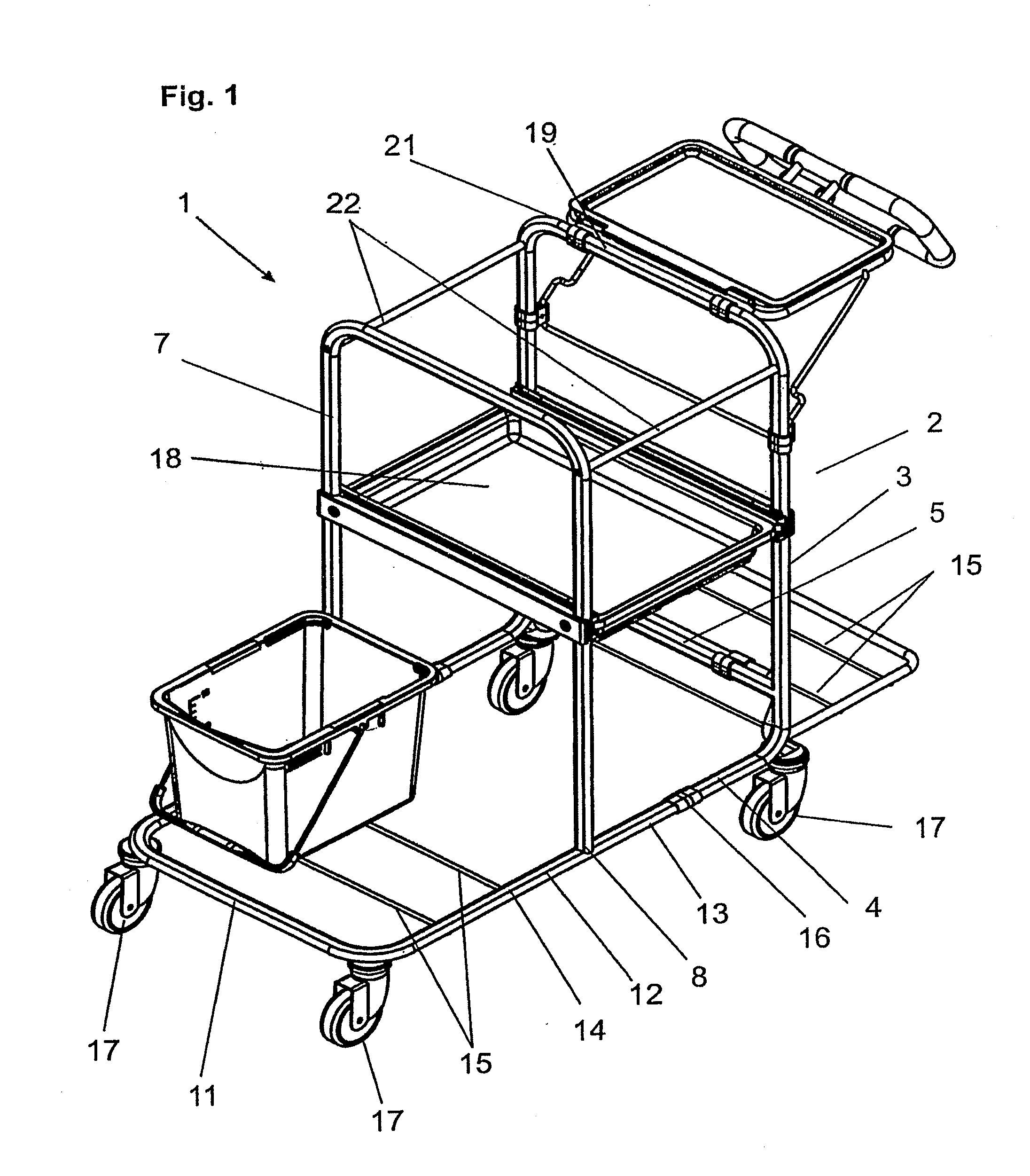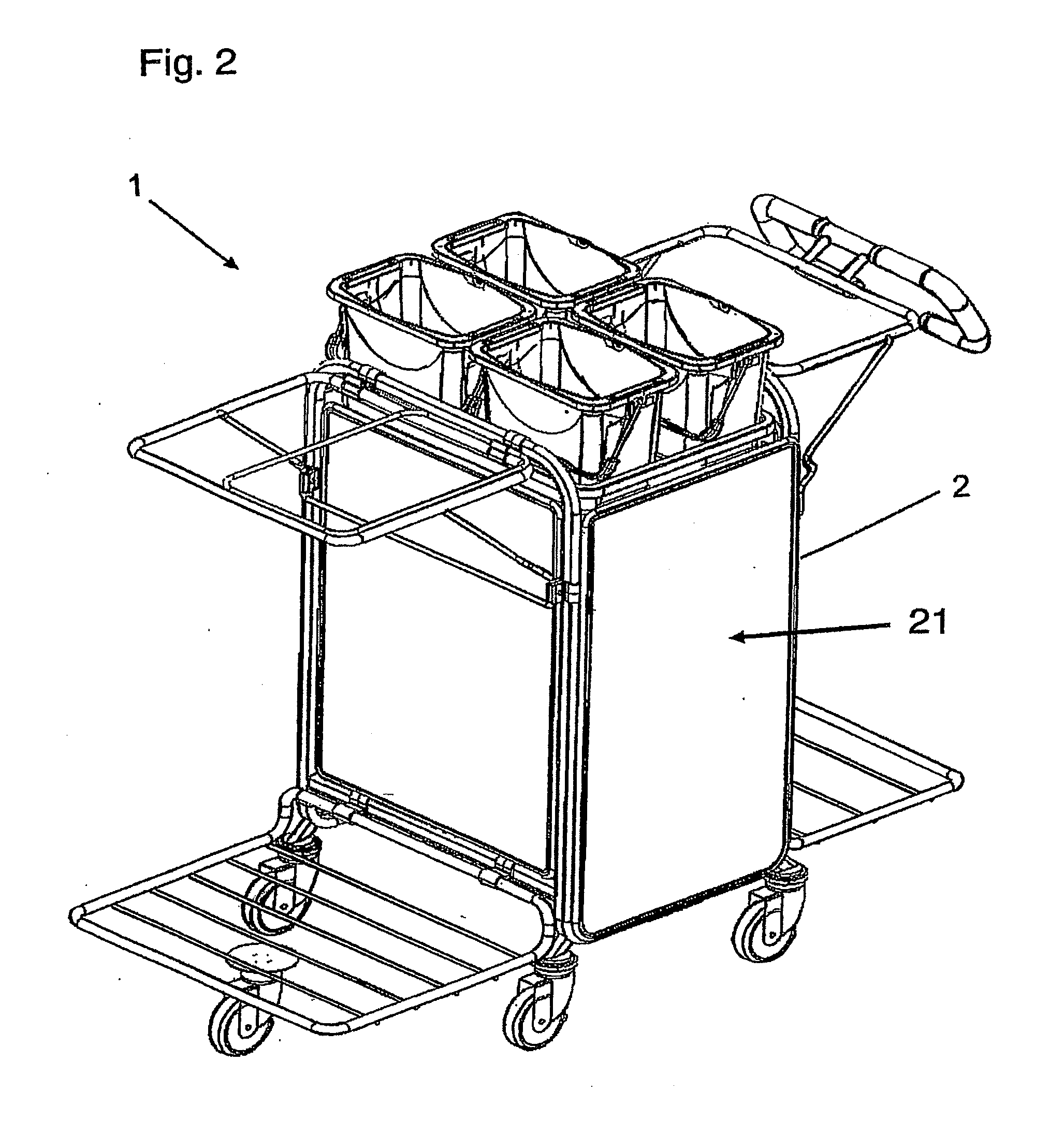Cleaning cart
a cleaning cart and cart body technology, applied in the field of cleaning carts, can solve the problems of making the access of cleaning tools and in particular to cleaning fluids by third parties more difficult, and achieve the effects of easy manufacture, easy expansion, and increased stability of connection
- Summary
- Abstract
- Description
- Claims
- Application Information
AI Technical Summary
Benefits of technology
Problems solved by technology
Method used
Image
Examples
Embodiment Construction
[0025]FIG. 1 shows a cleaning cart 1 with an expandable frame 2. Frame 2 comprises combinable and detachably connectable elements. A first element 3 is designed so as to be U-shaped, and both of its ends 4 are bent to form right angles. The ends 4 of element 3 are connected to the ends 13 of a fourth element 11 which is designed so as to be U-shaped. On the legs 12 of the fourth element 11, a third element 7 is mounted. This third element 7 is also designed so as to be U-shaped, and the ends 8 of the third element 7 are mounted on the legs 12 of the fourth element 11. The connection of ends 4 and 13 is implemented by a connecting element 16 made of a synthetic material. The interconnected elements 3, 7 and 11 form the frame 2. To increase the stability, the ends 4 of the first element 3 and the ends 8 of the third element 7 are connected to one another by a reinforcing brace 5. In addition, the first element 3 and the third element 7 are connected to each other by an additional rein...
PUM
 Login to View More
Login to View More Abstract
Description
Claims
Application Information
 Login to View More
Login to View More - R&D
- Intellectual Property
- Life Sciences
- Materials
- Tech Scout
- Unparalleled Data Quality
- Higher Quality Content
- 60% Fewer Hallucinations
Browse by: Latest US Patents, China's latest patents, Technical Efficacy Thesaurus, Application Domain, Technology Topic, Popular Technical Reports.
© 2025 PatSnap. All rights reserved.Legal|Privacy policy|Modern Slavery Act Transparency Statement|Sitemap|About US| Contact US: help@patsnap.com



